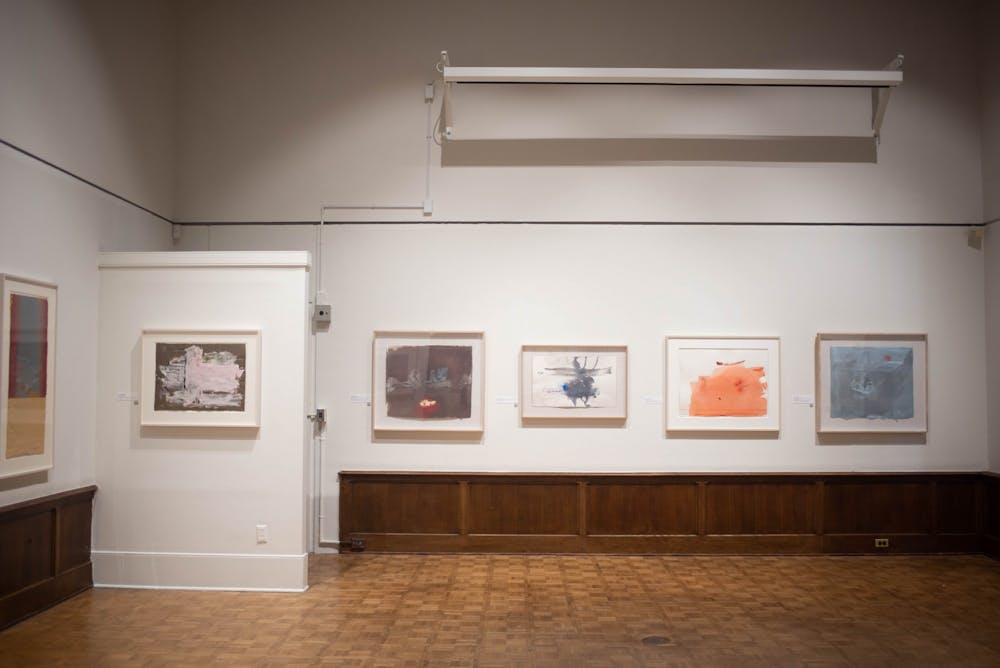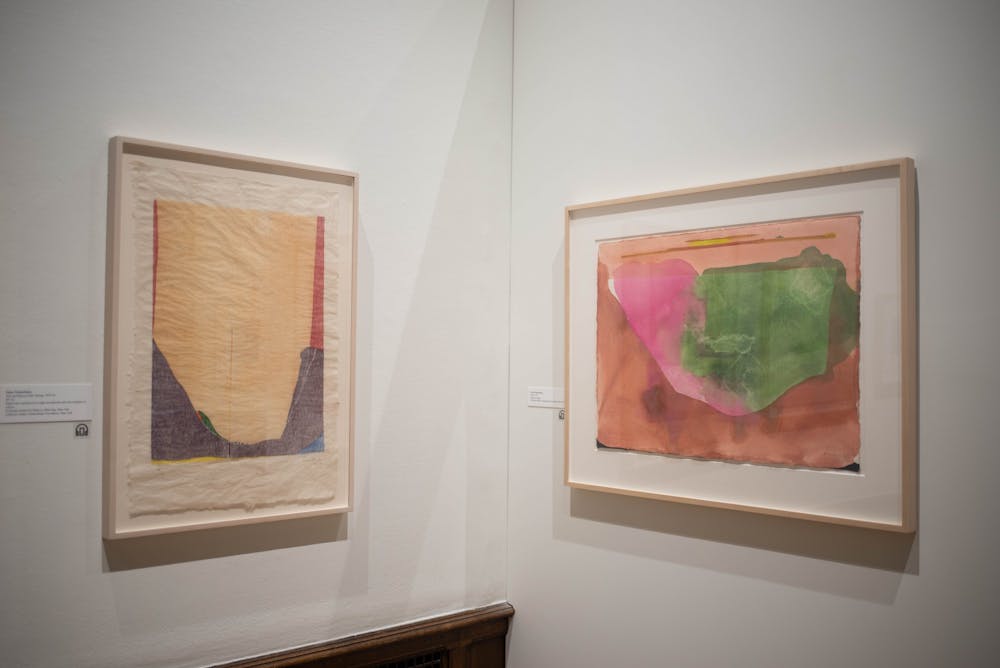Color Field painting was most likely doomed to fall out of favor from the day of its inception. It’s the sort of blobbish abstract expressionism that those who lack an appetite for non–representational art despise most. The post–war emptiness of thought that inspired the style doesn’t translate well into our modern tendencies to anxiously overthink all we encounter. Unlike the work of famed Abstract Expressionist painters Jackson Pollock or Willem de Kooning, Color Field painting leaves little for the eye to zero in on, and fewer paths of paint for the mind to follow.
Instead, Color Field is meant for the sort of deep introspection that is always pretentious and often performative. Just think of all the confusion caused in that one Mad Men episode by the appearance of a Mark Rothko painting in Bert Cooper’s office. “I don’t think it’s supposed to be explained,” remarks one character. “I’m an artist, okay, it must mean something,” scoffs another.
This is the sort of conversation that the work of Twentieth Century Color Field painter Helen Frankenthaler provokes. Now on view at the Arthur Ross Gallery of Fisher Fine Arts Library in the exhibition Frankenthaler on Paper, the artist’s lesser–known prints and little–seen paintings on paper reveal the foundations of her own efforts to create art that requires no explanation.

Markedly different in technique from Frankenthaler’s large–scale canvas paintings, the prints in this new exhibition betray the thoughtfulness in all of the artist’s work by emphasizing the laborious construction of her printmaking processes. Her more famous paintings like “Mountains and Sea” are emblems of both depth and spontaneity, as they were created in part by pouring paint from buckets onto the canvas and moving it around with a variety of brushes and sponges.
But some of the prints in Frankenthaler on Paper don’t have this same sense of easy impermanence (fans of Color Field will argue that none of her work does). “Cedar Hill,” a print of grainy veils of warm pinks and teals, is a ten–color woodcut made from twelve woodblocks, requiring several rounds of printmaking before completion. Such an involved process suggests that the thinking behind the piece’s formal qualities was involved as well, defying that spontaneity often ascribed to the abstractions of Frankenthaler and her contemporaries.
The highlight of the exhibition—especially in the eyes of the curators—is “Fiesta,” a 1973 work of acrylic on paper that most closely mirrors the grander trademarks of Frankenthaler’s style. With constrained yet free–flowing sections of paint mixing together in gentle blossoms and smudges of pink, orange, and green, the work appears both opaque and soft, colors layered as if they were overlapping tissue paper.

None of these prints or other works on paper displayed at Arthur Ross are studies for larger paintings to follow. In fact, Frankenthaler never conducted smaller preliminary studies for any of her work. Instead, the undeniable similarities between these comparatively minor works and those that brought her fame are a testament to the consistency with which Frankenthaler applied her themes to a canvas, or in this case, paper.
Prints like “Bay Area Monday IV” or works on paper like “Pink Palace” evoke the sense of place, simultaneously specific and non–specific, that resonate throughout nearly every piece of Frankenthaler’s career. And despite the immense amount of craft that goes into the variety of printmaking methods employed by Frankenthaler in these works, there is a perpetual sense of unfinished rawness that both engages and challenges its viewers.

Frankenthaler on Paper also includes a derivative of one of Frankenthaler’s most famous woodcuts in “East and Beyond with Orange.” The original, “East and Beyond,” is considered a breakthrough in contemporary woodcut technique due to Frankenthaler’s masterful ability to mimic the same fluid and organic shapes of color that are the hallmarks of her painted works. Here, the open space that dominates the painting is refreshed with a hue of golden orange, radiating like a sunset through a deep valley, as the sharper forms on the outer edges of the woodcut imply.
The language of Frankenthaler’s work is one of somewhat self–involved poetry, a sort of emotional rapture that may be too saccharine for her critics. But there is reward in the release from the sort of meaning that stricter art historians require in artistic analysis. Her prints and paper works in this exhibition challenge the sort of immersion that is afforded by her famous large-scale works. Yet in the intimacy of Arthur Ross Gallery, the layers of paint and ink come to a vibrant new life on the softly crinkled paper beneath them. Here, Frankenthaler can be noticed in detail rather than immersion, these smaller pieces offering their own investigation into the alluring mixture of amorphous spontaneity and finished form.

